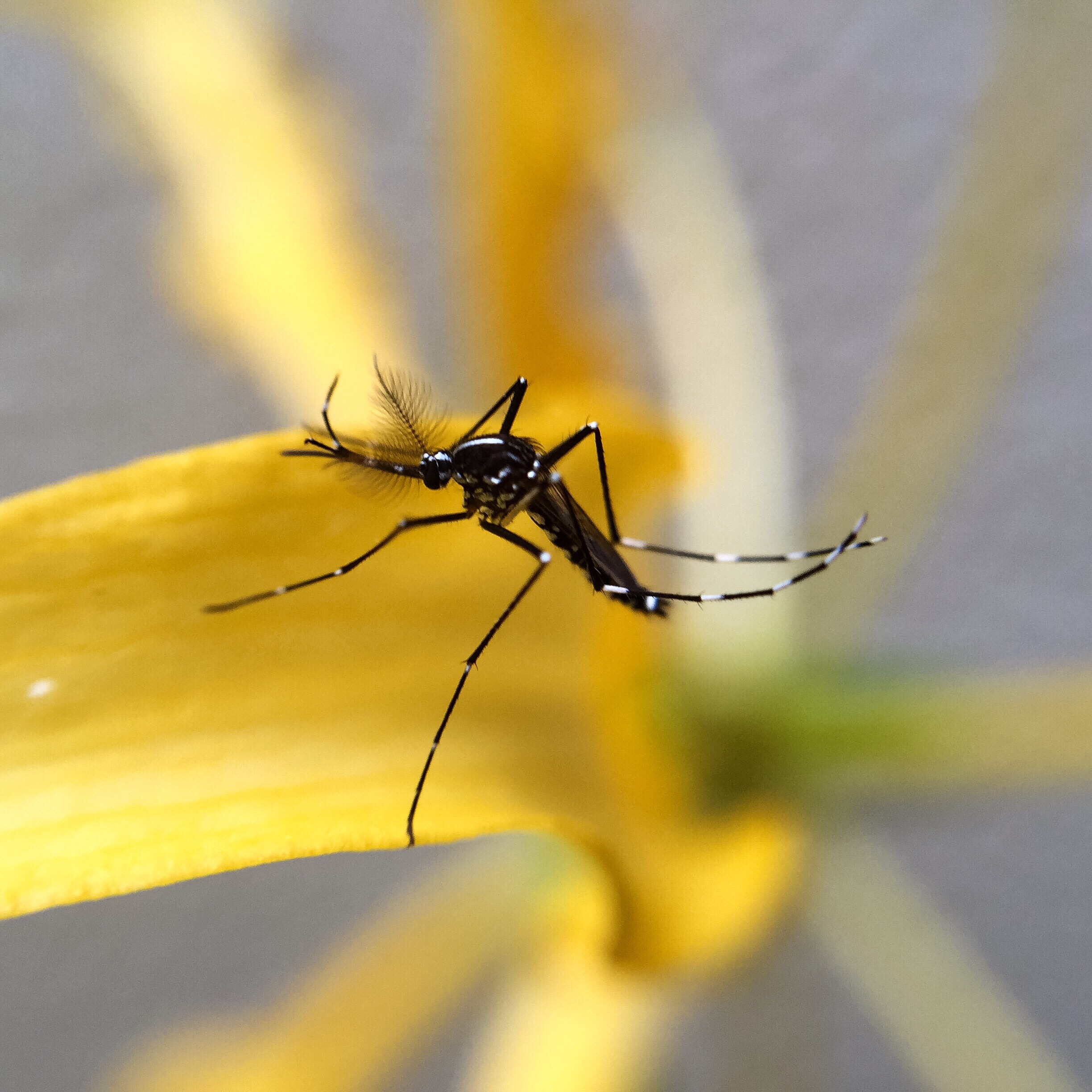Why do Mosquitoes Bite
A common misconception is that both male and female mosquitoes bite. It is actually only the female mosquito that will bite since the males lack the ability to suck blood.
Female mosquitoes find their prey, whether a human or an animal, by detecting carbon dioxide being exhaled, sensing body heat, and also by scent. Once they have selected their victim, they bite by inserting two small tubes, similar to hollow needles, into the skin. One tube is used to suck the blood while the other will simultaneously inject an enzyme preventing the blood from clotting.
The females do not receive any nutritional benefit from the blood. They use the protein to reproduce. Both male and female mosquitoes get all of their nutrients from nectar. Just like bees, they are considered essential pollinators. For this reason, mosquitoes cannot be globally eradicated.
What Attracts Mosquitoes to Your Home?
As previously stated, mosquitoes are drawn to stagnant water. Even if your property does not contain a lake or pond, mosquitoes can still thrive. Mosquitoes can be found in water trapped within clogged rain gutters and shaded areas around your home such as under decks or lawn furniture. They can be attracted to the smallest amount of water such as water left in an abandoned cup or bucket. Little water is actually needed for mosquitoes to successfully submerge their eggs for hatching.
Common Species of Mosquitoes
While there are over 3,500 species of mosquitoes, the most common are the Aedes Mosquitoes and the Anopheles Mosquitoes. To physically distinguish between the two, Aedes are black with white spots and Anopheles are a brownish-yellow color. Aedes mosquitoes prefer clear, shady water for laying their eggs, while Anopheles seek out murky and muddy water.
The Aedes Mosquitoes have the nickname “ankle biters” due to the fact that they primarily bite from the knee down. Unfortunately, socks and pants will not stop them as they can still bite through the fabric. They are active biters any time of the day or night. Anopheles mosquitoes will bite any exposed flesh, regardless of the location, and seek prey early in the day and late at night.
Mosquitoes as Disease Carriers
Mosquitoes become harvesters of a disease when they suck blood from an infected human or animal. The mosquito will then transmit the disease to the next human or animal it bites. Aedes mosquitoes are primarily responsible for the transmission of Malaria and Anopheles mosquitoes are known for transmitting a number of diseases including: Dengue Fever, Zika Virus, Yellow Fever, and West Nile Virus. These diseases are especially dangerous to children and the elderly.
How to Get Rid of Mosquitoes
In addition to removing stagnant water sources, home remedies include:
Larvicides
A larvicide is an option if your property is near a body of water. A larvicide consists of BTI (Bacillus Thuringiensis Israelensis) which naturally exists in the soil. The larvae die quickly after ingesting it. Perhaps the best part of using larvicide is that it is recognized as nontoxic to the environment and other living beings. Children, pets, and even the honeybees should be safe. It is important to know that the larvicide will not kill adult mosquitoes, but will eliminate the larvae, preventing more mosquitoes from becoming prevalent.
Repellant
Repellants can be controversial due to some individuals arguing they can be harmful to humans, pets, and the environment, and only being effective for about 30 days. If you choose to use a repellant, use the product as directed. Mosquito sprays made for outside should only be used outdoors for the safety of yourself and others. If you do choose to spray your yard, oil-based products are known to wash away in the rain. Finding products that are right for your climate can be important to effectively get rid of the mosquitoes.
Mosquito Zappers
Mosquito zappers are designed specifically for mosquitoes. They release carbon dioxide while simultaneously mimicking the heat of a living body to attract the mosquitoes, and then zap them.
Need Professional Help?
If you have tried these solutions and you are still unable to get rid of your mosquito problem, please give the number at the top of the page a call to get connected to a local pest professional in your area. We do not want your house and family to continue dealing with the current pest and want to find ways to protect your home in the future.
